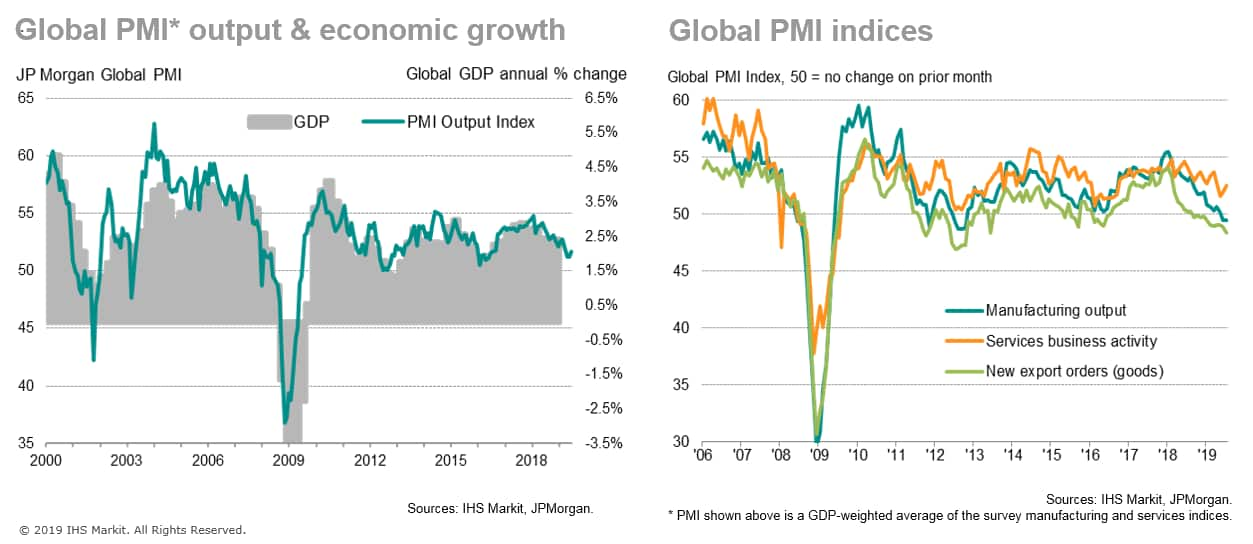Global economy lifted by services but hit by steepening decline in manufacturing
The following is an extract from IHS Markit's monthly PMI overview presentation. For the full report please click on the link at the bottom of the article.
The pace of global economic growth edged up in July but remained among the weakest seen over the past three years, according to the latest PMI surveys. The JPMorgan Global PMI™, compiled by IHS Markit, rose from 51.2 in June to 51.7 in July, a level which is consistent with worldwide GDP rising at a modest annual pace of approximately 1.8% (at market prices). Both the PMI and official GDP data indicate that the pace of global economic growth peaked at 2.9% at the end of 2017 and has since slowed gradually.
The PMI was lifted higher by faster service sector growth in July, which rose to a three-month high yet remained weaker than the average pace seen since late-2016. However, manufacturing output fell for a second successive month, indicating the first spell of falling production since 2012. This was, in turn, linked to an eleventh successive monthly decline in global goods export orders, which contracted at the sharpest rate since October 2012.

Chris Williamson, Chief Business Economist, IHS Markit
Tel: +44 207 260 2329
chris.williamson@ihsmarkit.com
© 2019, IHS Markit Inc. All rights reserved. Reproduction in whole or in part without permission is prohibited.
Purchasing Managers' Index™ (PMI™) data are compiled by IHS Markit for more than 40 economies worldwide. The monthly data are derived from surveys of senior executives at private sector companies, and are available only via subscription. The PMI dataset features a headline number, which indicates the overall health of an economy, and sub-indices, which provide insights into other key economic drivers such as GDP, inflation, exports, capacity utilization, employment and inventories. The PMI data are used by financial and corporate professionals to better understand where economies and markets are headed, and to uncover opportunities.
This article was published by S&P Global Market Intelligence and not by S&P Global Ratings, which is a separately managed division of S&P Global.
